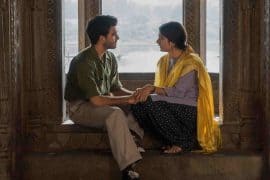Nestled in the forested heart of India, the state of Madhya Pradesh contains a town that boasts of ancient symbols of piety and architectural splendor. The historical site of Khajuraho is known for its medieval Hindu and Jain temples, exquisitely carved with intricate sculptures. Contrary to modern India’s moral policing and Hawk-like monitoring of anything remotely sexual, these figurines are a testimony to the celebration of eroticism in the medieval times. With the sculptures depicting everyday activities of ordinary people, the display of sex without any censorship or bashfulness seems to be a world apart from the preaching of the wise and ageing censor board in today’s time. Our country is the world’s largest democracy, taking pride in its fundamental rights and its many sub-divisions. Yet, our freedom of expression is often taken away with the weak excuse of it being too inappropriate for our society.
If India could be described as a television, the remote control would be our rights and duties while the pouch potato should ideally be the citizens living in this country. However, with the current interpretation of our ancient scriptures, the citizens are forced to be the younger sibling who struggles to get his hands on that coveted remote, but fails miserably unless bribes are used. Instead, the pot-bellied individual who forms the government of this country monopolizes the remote, deciding what we get to watch. Couples strolling in a park or walking down a beach while holding hands are practically ripped apart by plump frustrated men wearing khaki uniforms, invariably out of breath in their attempts to capture the people committing such blasphemy. On the other hand, petty thieves are let go as long as they slip a few notes into that same floundering police officer’s pocket.
When one visits the delicately sculpted temples present in places like Khajuraho and the Konark temple in Orissa, what is looked down upon in today’s age was revered and used as an artistic inspiration in a period much older and seemingly backward than ours. Sensitivity should be maintained while showcasing such forms of art on an exceptionally public domain, as India is a country with numerous beliefs, but the extent to which censorship has been stretched is pathetic and often ridiculous. M.F.Hussain’s paintings being condemned as insulting Hindu sentiments by depicting goddesses in the nude seems ironic when his creations are compared to the sculptures in most ancient and medieval temples. Instead of appreciating art in the form that it is presented in, the critics decide to ban one of India’s talented gems due to his bold decision of choosing the divine as his muse. At the same time, songs like Chikni Chameli and Munni Badnam Hui are topping song charts despite their lewd lyrics and objectification of women, who don’t leave much to imagination in their next-to-nothing outfits.
The same people, who applaud the rich cultural background and history of this country when they visit such architectural wonders, get back to their thrones and continue living with a blindfold across their eyes. A majority of us wait for the day this rotten piece of cloth falls off and the reigns are handed over to maturity and reason.





Comments are closed.